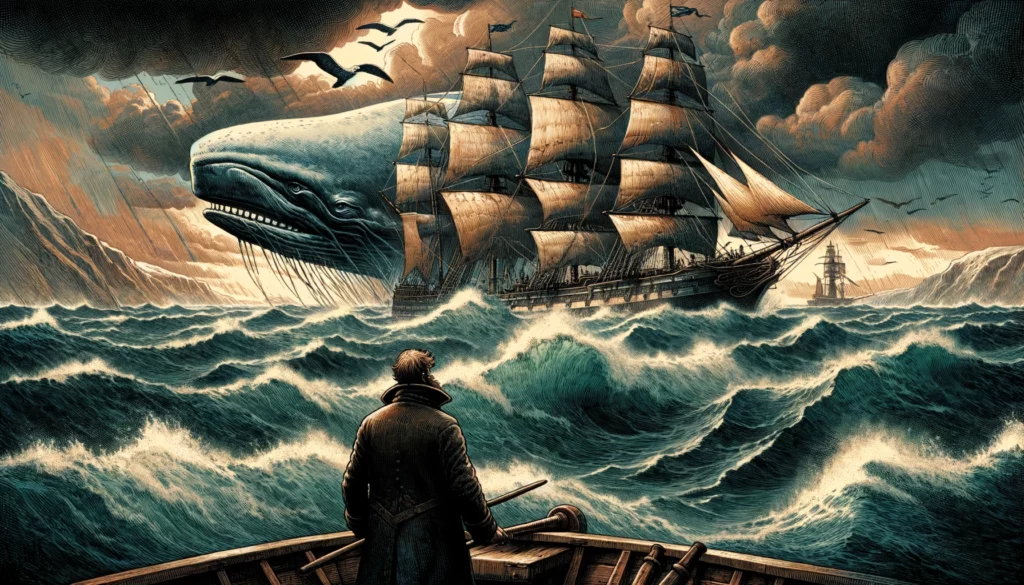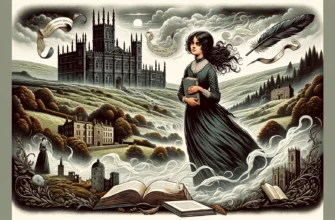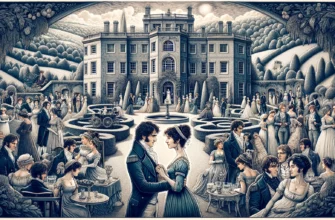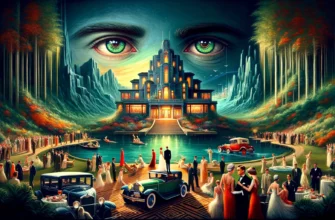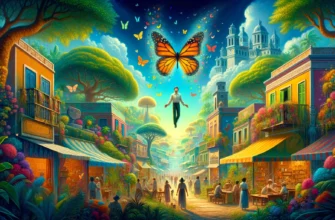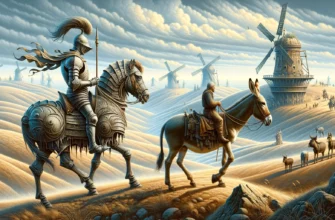The Life of Herman Melville and the Birth of Moby-Dick
Herman Melville’s journey to writing one of the greatest American novels began long before he put pen to paper. Born into an affluent New York family on August 1, 1819, Melville’s life took a dramatic turn after his father’s business failures and subsequent death in 1832.
The need to support his family led Melville to the sea at 19, a decision that profoundly shaped his literary future. His experiences aboard merchant ships and, later, the whaling ship Acushnet in 1841 provided a rich tapestry of experiences and characters that would find their way into his writing.
The sea-inspired and tormented Melville. After deserting the Acushnet and experiencing the harsh realities of life among cannibals in the Marquesas Islands, Melville’s return to the United States did not mark the end of his maritime adventures.
He continued to work on ships, traveling to locations such as Hawaii and England. These experiences were distilled into his earlier works, like “Typee” (1846) and “Redburn” (1849). However, “Moby-Dick,” which started in 1850 and was published in 1851, would consume and define his literary legacy.
The novel, initially titled “The Whale,” was influenced not just by Melville’s own experiences but also by his extensive reading in whaling literature and his philosophical and literary discussions with Nathaniel Hawthorne, to whom the book was dedicated.
Moby-Dick by Herman Melville is a cornerstone of American literature and a must-read classic novel, rich in symbolism, narrative complexity, and profound themes.
Despite the rich autobiographical and historical context, “Moby-Dick” was met with a lukewarm reception. Critics and readers alike found the book strange and unwieldy, with its unconventional narrative structure and philosophical digressions.
Sales were disappointing, and the book was out of print by Melville’s death in 1891. It wasn’t until the “Melville Revival” in the early 20th century that “Moby-Dick” was recognized for its narrative complexity, psychological depth, and profound symbolism, securing Melville’s place in the literary canon.
The Narrative Structure of Moby-Dick
“Moby-Dick” is renowned for its innovative narrative structure, which defies the conventions of the novel form. The narrative is a labyrinthine mixture of adventure, sermon, monologue, and encyclopedic entries. Melville’s use of various narrative styles mirrors Pequod’s voyage’s chaotic and unpredictable nature.
The central narrative is interspersed with chapters that digress into detailed expositions on cetology (the study of whales), the history of whaling, and philosophical musings, showcasing Melville’s comprehensive knowledge and desire to transcend the boundaries of the traditional novel.
The character of Ishmael, the novel’s narrator, is as complex as the narrative structure itself. Introduced with the famous opening line, “Call me Ishmael,” he serves as a participant in the story and as a philosophical observer, commenting on the events with a mix of wit, wisdom, and introspection.
Ishmael’s narrative voice shifts throughout the novel from personal and anecdotal to universal and existential, reflecting the novel’s thematic exploration of the human condition, the relentless pursuit of knowledge, and the struggle to find meaning in an indifferent universe.
The use of multiple voices and perspectives further enriches the narrative’s complexity. Ahab’s monologues, Starbuck’s moral deliberations, and the crew’s dialogues contribute to a polyphonic quality, making the Pequod a vessel of diverse human experiences and perspectives.
The novel’s narrative structure, with its blend of storytelling, scientific discourse, and philosophical reflection, challenges the reader to navigate through a sea of narrative possibilities, mirroring the difficult and uncertain journey of the Pequod itself.
The Symbolism of the White Whale
At the heart of “Moby-Dick” is the enigmatic and terrifying white whale, Moby Dick, a creature that defies simple interpretation. The white whale is a central symbol around which the narrative and thematic content of the novel revolves.
For Ahab, the whale represents the ultimate adversary, a personification of all evil and nasty in the world. His monomaniacal pursuit of the whale is driven by a desire for revenge and a need to confront the existential challenges of such a mysterious and indifferent adversary.
The symbolism of the white whale extends beyond Ahab’s vendetta. To different characters, the whale represents various aspects of the human experience. For some, Moby Dick is a manifestation of the sublime, an awe-inspiring force that transcends human understanding and power.
For others, the whale symbolizes the unpredictability and capriciousness of nature, an enigmatic force that can neither be controlled nor fully comprehended. The whale’s whiteness is a paradox, a symbol of purity and a blank canvas onto which the characters project their fears, desires, and existential dilemmas.
The multifaceted symbolism of the white whale is central to the novel’s exploration of the themes of obsession, knowledge, and the human struggle against the forces of nature.
Moby Dick is not merely a creature to be hunted; he is a mystery to be pondered, a challenge to the human spirit, and a symbol of the ungraspable and unknowable aspects of existence.
The chase for the white whale takes the crew of the Pequod across the vast oceans, leading them on a journey that is as much inward and philosophical as it is outward and physical.
Captain Ahab: A Study of Obsession and Leadership
Captain Ahab is one of American literature‘s most complex and enduring characters. Introduced in the novel as the monomaniacal captain of the Pequod, Ahab’s obsession with the white whale, Moby Dick, drives the novel’s narrative.
His single-minded pursuit of vengeance against the whale, which had cost him his leg, transforms him into a tragic figure symbolic of the destructive power of obsession.
Ahab’s character is a study in contrasts: he is at once a charismatic leader capable of inspiring his crew and an authoritative figure whose obsession closes his eyes to everything else, including the safety and well-being of his men.
Ahab’s leadership is a complex facet of his character. His authority on the Pequod is absolute, and his command over his crew is a testament to his strength of character and force of will.
However, Ahab’s leadership is driven not by a sense of duty or concern for his crew but by an all-consuming desire for revenge. His interactions with his officers, especially Starbuck, who serves as a moral counterpoint to Ahab’s obsession, highlight the conflict between duty and obsession, reason and passion.
Ahab’s ability to lead is inextricably linked to his monomania, which casts a shadow over his decision-making and ultimately leads to the tragic downfall of the Pequod and its crew.
The portrayal of Ahab in “Moby-Dick” is a profound exploration of the human psyche. Herman Melville delves into Ahab’s character’s depths, revealing his inner world’s complexities. Ahab’s monologues and soliloquies provide a window into his tortured soul, reflecting his internal struggle and relentless pursuit of the whale.
His character is a reminder of the thin line between greatness and madness, the duality of human nature, and the potential for self-destruction inherent in the human pursuit of knowledge and power.
The Pequod and Its Crew: A Microcosm of Society
The Pequod, the whaling ship at the center of “Moby-Dick,” is more than just a vessel on a whaling voyage; it is a microcosm of mid-19th century society. Melville populates the ship with a diverse crew representing different races, cultures, and beliefs.
This diversity is epitomized in characters such as Queequeg, the tattooed Polynesian harpooneer, and Starbuck, the first mate whose moral compass starkly contrasts Ahab’s obsession.
Through the interactions and relationships of the Pequod’s crew, Melville explores the themes of social hierarchy, racial and cultural diversity, and the human capacity for cooperation and conflict.
The hierarchical structure aboard the Pequod reflects the social stratification of the time. Ahab’s absolute authority as captain, the deference shown to the mates, and the varied roles of the crew members all mirror the broader societal structure.
However, the crew’s close quarters and shared experiences create a sense of camaraderie and interdependence that transcends social and racial boundaries. Melville uses the microcosm of the Pequod to comment on the potential for unity and division within society, highlighting both the strengths and the frailties of the human spirit.
The relationships and dynamics aboard the Pequod are central to the novel’s exploration of the human condition. The interactions between characters such as Ahab and Starbuck, Queequeg and Ishmael, and the diverse crew members illuminate the complexities of human nature.
The Pequod becomes a floating world, representing the broader human society with all its contradictions, conflicts, and potential for transcendence.
Melville’s Use of Whaling as a Metaphor
In “Moby-Dick,” the whaling industry serves as more than just the backdrop for the novel’s action; it is a potent metaphor for broader themes.
Melville’s detailed and often graphic descriptions of whaling practices add a layer of realism to the narrative, grounding the novel’s more philosophical digressions in the gritty reality of life aboard a 19th-century whaling ship.
However, whaling – the pursuit, hunt, and kill – also symbolizes the human struggle against nature, the relentless pursuit of knowledge, and the quest for meaning in an indifferent universe.
The dangerous and grueling work of whaling is depicted in vivid detail, from the initial sighting of a whale to the harrowing chase, the bloody battle, and the eventual processing of the whale’s carcass.
This laborious and often deadly process is a metaphor for the human condition, reflecting the struggle for survival, the desire to conquer and understand the natural world, and the moral and existential dilemmas that arise from such endeavors.
The whale itself, particularly Moby Dick, becomes a symbol of nature’s ambiguity, a force that can be pursued and battled but never fully understood or mastered.
Melville’s portrayal of the whaling industry reflects the human pursuit of knowledge and meaning. The detailed cetological chapters serve as a metaphor for the human desire to categorize and comprehend the world. At the same time, the white whale’s elusiveness symbolizes the universe’s ultimate unknowability.
The Pequod’s voyage is a journey into the heart of darkness, a quest for truth that raises more questions than it answers. Through the metaphor of whaling, Melville explores the depths of the human psyche, challenging readers to confront the limits of knowledge and the mysteries of existence.
Religion and Philosophy in Moby-Dick
“Moby-Dick” is a text rich with religious and philosophical undercurrents, weaving a complex tapestry that reflects the diverse beliefs and existential questions of the 19th century.
Melville employs a range of religious symbolism and references, drawing from Christianity, Paganism, and other world religions to explore the profound questions of existence, morality, and the divine.
The character of Father Mapple and his sermon in the Whaleman’s Chapel offers a poignant exploration of the biblical story of Jonah, serving as a forewarning of the perils of defiance against God’s will. This theme resonates deeply with Ahab’s rebellious journey.
The novel also delves into the philosophical realm, touching on existential themes and the human condition. Characters like Ishmael and Ahab represent different responses to the existential dilemmas of life.
Ishmael’s reflective and often digressive narrative offers a contemplative view of existence, finding solace in camaraderie and the vast, unknowable sea. In contrast, Ahab’s monomaniacal pursuit of the white whale symbolizes a defiant, almost nihilistic confrontation with the universe’s absurdity and indifference.
Melville’s narrative weaves these religious and philosophical threads into a rich tapestry, reflecting the complex, often contradictory, nature of the human quest for meaning and understanding.
Through its characters and narrative, “Moby-Dick” poses profound questions about fate, free will, and the existence of evil. The crew members’ diverse beliefs and views create a microcosm of religious and philosophical diversity, mirroring the broader societal struggles with faith, morality, and the pursuit of truth.
Melville’s novel does not offer easy answers but instead invites readers to ponder the depths of these eternal questions, reflecting the complexity and ambiguity of the human experience.
The Critical Reception and Legacy of Moby-Dick
“Moby-Dick” experienced a tumultuous journey from its publication in 1851 to its eventual recognition as a masterpiece of American literature. Initially, the novel received mixed reviews and was ignored by the reading public.
Critics found its narrative structure bewildering and its philosophical digressions challenging, leading to disappointing sales and Melville’s subsequent decline into obscurity. However, the early 20th century marked a dramatic reversal in the novel’s fortunes.
The “Melville Revival” of the 1920s brought renewed critical attention and appreciation, with scholars and readers alike recognizing Melville’s work’s depth, complexity, and richness.
The novel’s reevaluation was part of a broader reassessment of American literature and its foundational texts. Critics began to appreciate the ambitious scope of “Moby-Dick,” its profound exploration of the human condition, and its innovative narrative techniques.
The novel’s intricate symbolism, psychological depth, and thematic complexity resonated with modernist sensibilities, elevating Melville to a literary icon.
The novel’s influence extended beyond literature, inspiring works in other mediums, including film, theater, and the visual arts, and cementing its place as a seminal text in the American literary canon.
Today, “Moby-Dick” is celebrated as a monumental achievement in American literature and a profound exploration of deeply relevant themes. Its examination of obsession, the human struggle against nature, the quest for knowledge, and the complexities of good and evil continues to resonate with readers.
The novel’s rich tapestry of symbolism, character, and narrative complexity offers endless possibilities for interpretation. It has become a timeless work, continually rediscovered and reinterpreted by each new generation.
Moby-Dick in Modern Media and Culture
The impact of “Moby-Dick” extends far beyond the confines of literary studies, permeating modern media and popular culture. The novel’s themes, characters, and narrative have been adapted and reimagined in various forms, showcasing its enduring relevance and appeal.
Film adaptations, such as John Huston’s 1956 movie “Moby Dick,” starring Gregory Peck as Ahab, bring the novel’s dramatic narrative and complex characters to a broader audience, highlighting the timeless nature of Melville’s masterpiece.
Theater and opera have also embraced the rich narrative and thematic content of “Moby-Dick,” with stage adaptations and operatic renditions interpreting the novel’s profound exploration of the human condition, obsession, and struggle against the unknown.
Inspired by the novel’s vivid imagery and symbolic depth, visual artists have created works that capture the essence of Melville’s vision, further cementing the novel’s influence on American culture.
In education, “Moby-Dick” is prominent in the curriculum, challenging students to grapple with its complex narrative, rich symbolism, and profound themes.
The novel’s exploration of universal questions of existence, morality, and the human spirit resonates with readers of all ages, making it a staple in literary studies and a key text for understanding the breadth and depth of American literature.
As “Moby-Dick” continues to inspire and provoke, its place in the pantheon of great literary works is assured, a testament to Melville’s genius and the enduring power of his vision.
